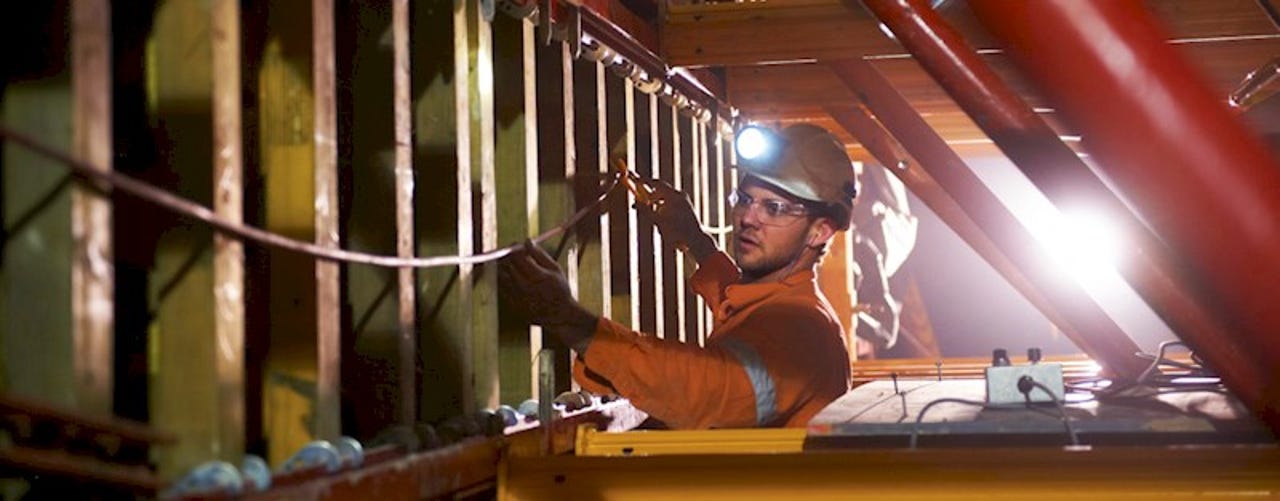Construction in the cloud: The future of John Holland


John Holland is a construction, tunnelling, rail, building, and services provider, with operations in Australia, New Zealand, South East Asia, and the Middle East. At almost 70 years-old, the company plays in a space not synonymous with innovation, one CIO Chris Walsh said is always at the bottom of reports from the likes of McKinsey in terms of the industry's willingness to innovate or disrupt itself.
Walsh wanted John Holland to prove such statistics wrong, and convinced the organisation that 100 percent cloud was key to getting ahead.
After appointing a new CTO in Lia Taylor, who was previously with the local arm of Microsoft, John Holland turned to Amazon Web Services (AWS) in June last year. In January, the company started sending its legacy systems into the cloud, and as of this month, John Holland is 75 percent through its total AWS migration. Taylor expects completion to be on schedule for June.
"All legacy, entire datacentres, the works," Walsh added.
"We've got some really old estimating apps that are traditional DOS-based systems that are pretty gnarly when it comes to migrating hosting to AWS ... we think we're going to be OK."
According to Walsh, it was difficult running operations across various countries when everything was hosted locally; he told ZDNet the company's Singapore business, for example, was impacted.
"Putting things in AWS allows us to put things closer to where the projects are and also the regional offices," he explained. "That was one of the drivers -- cost was not -- it was agility, placing services closer to my customers and users, and cost may come fourth or fifth."
Pointing to the recent assessment AWS announced completing through the Australian Information Security Registered Assessors Program (IRAP), an initiative from the Australian Signals Directorate (ASD), Walsh said having certain elements provided by a partner prove to be far more beneficial than attempting them in-house.
If embarking on a technology transformation wasn't enough, Walsh and Taylor decided to take their staff on a transformation, too.
Mindful of the looming skills shortage, the pair determined a handful of technology-based skills required to help John Holland to be future-proof, and created three streams for their 84 IT staff to choose from.
"We see there is a skills gap in the market, it is phenomenal. I see it's not just a benefit for John Holland, a benefit for the wider Australian market; you pick up the grad and you train the ones that want to learn and if they leave you, they're leaving you for the benefit of the wider Australia," Walsh told ZDNet.
"There's that fear that you're going to the cloud, I'm no longer important to you," Taylor added.
"It's not a 'We can automate all these things and then your job's gone, bye; we can automate those things, fantastic, but I want to retrain you and use you for all of these new things we're going to be doing," Walsh continued.
"We're not an attractive company when it comes to attracting IT talent."
Must read: Atlassian paints dire future for workers in the face of automation
The training for staff covered areas such as development, security, operations, and network, and has been aided by the local arm of AWS.
"It's about being able to show the team benefits, bringing them along for the journey," the pair explained.
The construction industry in Australia places strict attention on safety, and Walsh said as a result, site supervisors spend a lot of time focusing on the smaller, yet important elements they shouldn't have to.
He said one problem currently under review is people not wearing the right personal protective equipment (PPE) onsite.
"You might have 12 different entries to a construction site, the biggest issue we have is people not wearing correct PPE, so hat, vests, steel-capped boots, the works, so placing a camera on all of those entry points and automatically checking the vision of what's coming through to say, 'Hey, you can't come through because you don't have a hat on'," Walsh explained.
"We're building the safety stuff at the moment."
He said such a simple-sounding initiative is only capable with the company's shift to the cloud.
"Our site supervisors waste so much time on the basics, when they should be looking at working from heights ... the real issues, not, 'Hey you're missing your gloves'," he added.
With John Holland soon moving into a new building, Taylor said having a "greenfields" opportunity allows the company to look into other AWS initiatives, such as implementing a virtual assistant in Sumerian to take some of the mundane away from staff.
RELATED COVERAGE
- Visy's robotic vision driven by Amazon
- AMP on getting Australian regulators onside for AWS shift
- How the ABS prepared for the same-sex marriage survey using the public cloud
- An Amaysim journey: A lesson in how to use cloud to take on the big boys
- How the NSW government disrupted insurance through the cloud with icare
- Rio Tinto preparing for the Mine of the Future with automation
- Mining player CPM goes live with SAP Leonardo in Australia
- Amazon Web Services: The smart person's guide (TechRepublic)
- Here's what developers really think about AWS, Microsoft Azure, and Google Cloud (TechRepublic)